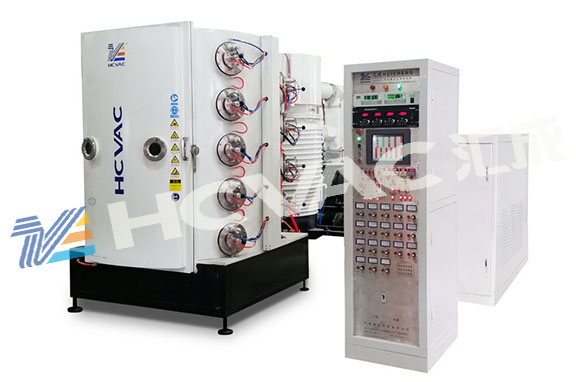Why does the pvd coating machine use high-purity gas when coating? Professionals who have a deeper understanding of the vacuum coating industry may have a better understanding. Pure gas, so as to ensure that the plated product is a benign product.

In vacuum ion coating, the color of liquid gas produced by different gases will be different. Argon is generally used to create a coating environment. When titanium and chromium are deposited, industrial gas is filled with nitrogen to produce silver and yellow. If you want to produce black or gray products, you need to add acetylene gas and oxygen to produce blue products. In addition to gas, the color of the product produced is also affected by conditions such as pressure, temperature, and time.
Under the condition of high vacuum degree, the high-purity coating metal (such as aluminum) evaporates at high temperature and will fly freely and settle on the surface of the workpiece to form a coating. Argon is a protective gas to prevent oxidation reaction from affecting the quality of the coating.
Argon does not participate in the reaction, but only increases the air pressure to improve the discharge conditions of the target during coating. Argon is not used for coating, but is mainly used to create a coating environment. Nitrogen and argon are both inert gases. After rushing in, one can exclude oxygen and prevent oxidation. Second, the content ratio of nitrogen and argon in the diffusion pump is different, and different colors can be coated. The main purpose is to change the coating. product color.
If it is the gas used to adjust the pressure during coating, I think it is as follows: if the argon gas is only the pressure, the primary pressure can be ignored, but the secondary pressure should be less than 0.5 atmospheres. Nitrogen is also, mainly because if it is too large, it will cause the pressure in the vacuum chamber to change too drastically, resulting in errors. If an ion source is used, the amount of argon gas entering should not be too large. If it is too large, the amount of ions will be too large and the parts will be burned out. The pressure is no different from the above.
Any solid material will dissolve and adsorb some gases in the atmospheric environment, and when the material is placed in a vacuum state, it will release gas due to desorption and desorption. The rate of outgassing is proportional to the gas content in the material. Different materials decompose the gas composition and desorption temperature and time are different.
Different pumps have different pumping rates for gases with different compositions. When vacuuming, the atmosphere in the container is first pumped out (this part of the gas is quickly pumped away, and the gas in the furnace is basically exhausted at 10-1Pa), and then the gas desorbed from the surface of the material and the inside of the material diffuse out to the surface. Therefore, after the goods enter the furnace, heat preservation and degassing must be carried out, because the goods will absorb some impurity gases before entering the furnace, and we need to heat them properly to make these The gas resolves the surface of the desorbed goods. Taking stainless steel as an example, in addition to the gas adsorbed on its surface, some gases will be precipitated inside the steel during the continuous heating and heat preservation process. Adhesion is also greatly affected.
Therefore, when the
pvd coating machine coats the film, the quality of the film layer and the gas play a key role, which is an indispensable step in the coating process.



